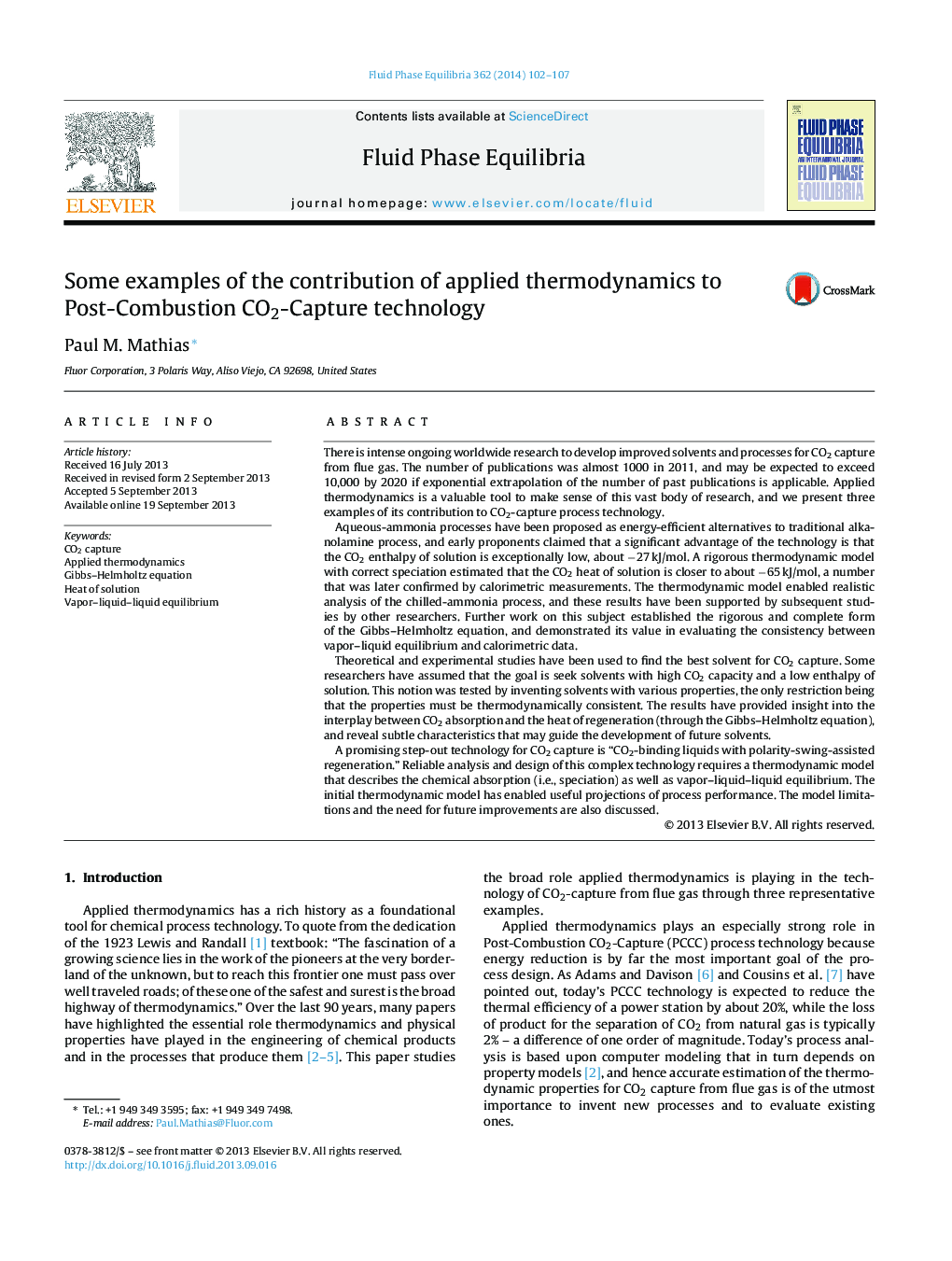| Article ID | Journal | Published Year | Pages | File Type |
|---|---|---|---|---|
| 202871 | Fluid Phase Equilibria | 2014 | 6 Pages |
There is intense ongoing worldwide research to develop improved solvents and processes for CO2 capture from flue gas. The number of publications was almost 1000 in 2011, and may be expected to exceed 10,000 by 2020 if exponential extrapolation of the number of past publications is applicable. Applied thermodynamics is a valuable tool to make sense of this vast body of research, and we present three examples of its contribution to CO2-capture process technology.Aqueous-ammonia processes have been proposed as energy-efficient alternatives to traditional alkanolamine process, and early proponents claimed that a significant advantage of the technology is that the CO2 enthalpy of solution is exceptionally low, about −27 kJ/mol. A rigorous thermodynamic model with correct speciation estimated that the CO2 heat of solution is closer to about −65 kJ/mol, a number that was later confirmed by calorimetric measurements. The thermodynamic model enabled realistic analysis of the chilled-ammonia process, and these results have been supported by subsequent studies by other researchers. Further work on this subject established the rigorous and complete form of the Gibbs–Helmholtz equation, and demonstrated its value in evaluating the consistency between vapor–liquid equilibrium and calorimetric data.Theoretical and experimental studies have been used to find the best solvent for CO2 capture. Some researchers have assumed that the goal is seek solvents with high CO2 capacity and a low enthalpy of solution. This notion was tested by inventing solvents with various properties, the only restriction being that the properties must be thermodynamically consistent. The results have provided insight into the interplay between CO2 absorption and the heat of regeneration (through the Gibbs–Helmholtz equation), and reveal subtle characteristics that may guide the development of future solvents.A promising step-out technology for CO2 capture is “CO2-binding liquids with polarity-swing-assisted regeneration.” Reliable analysis and design of this complex technology requires a thermodynamic model that describes the chemical absorption (i.e., speciation) as well as vapor–liquid–liquid equilibrium. The initial thermodynamic model has enabled useful projections of process performance. The model limitations and the need for future improvements are also discussed.
